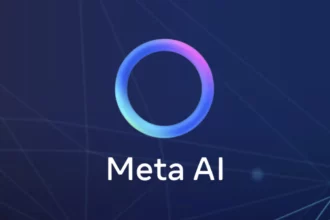Are you confused about the difference between an objective function and a loss function? Don’t worry, you’re not alone! These terms are often used interchangeably, causing confusion for many people. In this blog post, we’ll unravel the mystery and help you understand the nuances between the two. So, grab a cup of coffee and get ready to dive into the world of objective functions and loss functions. By the end of this post, you’ll be able to confidently differentiate between the two and understand their significance in various domains. Let’s get started!
Table of Contents
ToggleUnderstanding the Objective Function
An objective function is the cornerstone of optimization, a beacon guiding decision-makers through the complex terrain of choices and constraints. Imagine it as the captain of a ship, steering through foggy waters with the goal of reaching the most profitable destination or the least costly route. It is a variable, often denoted as Z in the linear formulation Z = ax + by, which is the essence of mathematical and computer science endeavors to find the best solution possible.
| Term | Definition |
|---|---|
| Objective Function | A variable to be optimized in mathematical models, usually expressed as Z = ax + by. |
| Decision Variables | The variables x and y in the objective function which control the outcome and are subject to constraints. |
| Constraints | Limitations or conditions that the decision variables must satisfy, such as x > 0 and y > 0. |
| Optimization | The process of maximizing or minimizing the objective function value subject to constraints. |
The chosen decision variables, x and y, are the protagonists of our equation, given the power to sway the objective function within the bounds of their constraints. These constraints act much like the rules of a game, delineating what moves are permissible—ensuring that x and y remain in the realm of the positive, for example.
Businesses harness the power of the objective function to sculpt their strategies. They wield it to sculpt mountains of profit or to carve valleys of costs, always with the intent of optimizing their outcomes. Whether it’s reducing the expenditure on a construction project or boosting the production figures to meet market demands, the objective function is the mathematical expression of their economic desires.
It’s fascinating to note how this mathematical concept transcends its origins, taking on various aliases in different domains. In finance, it may be the profit function that companies seek to swell. In artificial intelligence, it could be the fitness function that algorithms aim to enhance. And in the realm of game theory, it manifests as the utility function, a measure of a player’s satisfaction.
In the quest for efficiency, the objective function is akin to a compass, pointing toward the peak of performance and the trough of transactional excess. It is not just a set of symbols on paper but a representation of real-world goals and aspirations. The elegance of the objective function lies in its universal application; it is the quantitative reflection of qualitative goals across the spectrum of human endeavor.
Adopting an SEO-optimized perspective, when we delve into the realm of ‘Objective Function Vs Loss Function,’ one must appreciate the nuance that while they are intrinsically linked, each plays a unique role in the grander scheme of optimization. The objective function is the broader target, while the loss function, as we will explore in the following sections, is a specific path towards achieving that target.
The Role of Loss Function
Imagine the loss function as the critical compass in the universe of machine learning, a universe where the quest is to chart the most accurate maps of prediction. The loss function is akin to a feedback mechanism, whispering to the algorithm how far off its predictions are from the true course. It gauges the performance of a prediction model by quantifying the divergence between the expected outcomes and the predictions made by the model.
At the heart of it, the loss function is a tale of aspirations—how a model yearns to perfectly echo reality. The lower the loss, the closer the model’s predictions are to actual outcomes, much like a golfer whose aim is to minimize strokes to conquer a course. Each training example is an opportunity for the model to refine its swing, to adjust its stance, with the loss function providing the scorecard for each shot.
It’s fascinating to note that the loss function doesn’t operate in isolation. Within machine learning, it’s an essential piece of a larger puzzle. This puzzle is the process of optimization, where algorithms learn from data by iteratively improving their predictions. The loss function provides a clear, quantitative target for these improvements. When we say we’re optimizing an algorithm, we mean that we’re on a mission to find the set of parameters that results in the smallest possible loss.
Moreover, the loss function is not a one-size-fits-all tool. It morphs to fit the context of the problem at hand. For regression problems, where predictions are about estimating numerical values, one might encounter the mean squared error as a popular loss function. In classification tasks, where the aim is to assign inputs to different categories, the cross-entropy loss might take center stage.
By minimizing the loss function, we steer the model towards greater accuracy. Yet, it’s not just about achieving the lowest possible score. The choice of loss function can shape the learning process, influencing how sensitive the model is to outliers or how it balances various trade-offs inherent in prediction tasks. The artful selection and management of the loss function is a dance of numbers, where precision leads to performance.
As we move forward, let’s keep in mind that the loss function, while a vital tool, is a servant to a greater master—the objective function. The loss function is the path, but the objective function encompasses the destination and the journey towards it. It is the broader narrative that guides the entire optimization saga, where minimizing loss is but a chapter in the epic of machine learning.
In the forthcoming exploration of Objective Function Vs Loss Function, we’ll delve deeper into this relationship, unraveling how these two pivotal functions coexist and diverge within the grand optimization narrative.
Objective Function Vs Loss Function
In the pursuit of creating predictive models that mirror the complexity of reality, we encounter two conceptual beacons that guide our journey: the objective function and the loss function. These twin pillars of optimization, though closely linked, illuminate different paths on the road to model refinement.
The objective function, often envisioned as the grand architect of algorithm performance, is the overarching entity we endeavor to optimize. In the realm of machine learning, this optimization typically takes one of two forms: either the relentless pursuit of minimization, to diminish error and cost, or the ambitious quest for maximization, to enhance accuracy or other performance measures.
Enshrined within the objective function is the loss function. Consider the loss function as the craftsman, meticulously chiseling away at the rough edges of predictions on a case-by-case basis. Each training example is an opportunity to measure deviation from the expected outcome, and the loss function quantifies this divergence with scrupulous precision.
Conflating the terms cost function and loss function is common practice, yet a subtle distinction whispers between their definitions. The loss function’s domain is the individual—each unique prediction and its fidelity to the truth. In contrast, the cost function emerges as an aggregate measure, an average of the loss functions across the entirety of the training data, embodying the collective error of the model.
While the loss function is integral to the objective function, they serve discrete purposes. The former is the sentinel, standing guard over each prediction, while the latter is the sovereign, ruling over the model’s overall strategy for learning. In summary, the objective function is either a loss function or its inverse, tailored to fit the problem at hand and tuned to guide the model toward its ultimate performance potential.
Understanding the nuance between these two functions is not merely academic—it’s a practical cornerstone for anyone venturing into the landscape of machine learning. It is by grasping these concepts that we can steer our predictive models with greater precision, ensuring they evolve not just with mathematical elegance, but with a keen sensitivity to the data they are meant to interpret.
Conclusion
In the intricate dance of algorithms that defines the world of machine learning, the distinction between the objective function and the loss function emerges as a pivotal point of understanding. To the untrained eye, these functions may appear as mere cogs in the vast machinery of data analysis. Yet, to the seasoned data scientist, they are the heartbeat of predictive modeling—a duo that, when harmoniously synchronized, can lead to the most profound insights and revolutionary advancements.
The journey of a machine learning model from conception to implementation is akin to navigating a complex, ever-changing labyrinth. At every turn, the loss function serves as the model’s compass, providing real-time feedback on the accuracy of its predictions, ensuring that with each iteration, the model hones in on the true path. This relentless pursuit of precision is not for the model’s gratification but rather to fulfill the ultimate quest set forth by the objective function—the beacon that lights the way toward optimization, whether it be through the minimization of errors or the maximization of efficiency.
Together, these functions form a powerful alliance. The objective function sets the destination, the grand vision of what the model seeks to achieve. The loss function, meanwhile, charts the course, calling out the deviations and missteps, and guiding the model back to safer waters. This partnership is not just about reaching a goal; it’s about the elegance of the journey, the efficiency of the route, and the constant calibration that turns good into great.
As we continue to push the boundaries of what’s possible with data, the roles of the objective and loss functions will undoubtedly evolve. However, their essence will remain the same—indispensable guides in the quest for algorithmic excellence. For businesses and researchers poised on the cutting edge, understanding this dynamic is more than academic; it’s the key to unlocking new realms of innovation and achieving competitive advantage in a data-driven future.
So, let us not underestimate the power of these mathematical sentinels. In the realm of machine learning, they are the silent strategists, the unsung heroes that drive models to their peak performance. They are the architects of accuracy, the champions of clarity, and the guardians of good judgment. Embracing their nuances is not just a technical necessity—it’s a tribute to the art and science of machine learning itself.
Q: What is the difference between objective function and loss function?
A: The objective function is the one we optimize, while the loss function is the measure of error or loss over a set of data. The objective function is what we want to minimize or maximize, whereas the loss function is not necessarily the one we’ll minimize, although it can be.
Q: What is the objective of a loss function?
A: The objective of a loss function is to measure how well a prediction model performs in terms of predicting the expected outcome or value. It helps convert the learning problem into an optimization problem, where the algorithm is optimized to minimize the loss function.
Q: What is another name for the objective function?
A: The objective function can also be referred to as a loss function, cost function, error function, reward function, profit function, utility function, or fitness function, depending on the specific domain. In some cases, the objective function is to be maximized.
Q: Can a loss function include terms from different levels of a hierarchy?
A: Yes, a loss function can include terms from several levels of a hierarchy. This allows for a more comprehensive evaluation of the error or loss in a prediction model.




